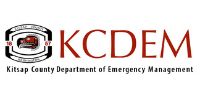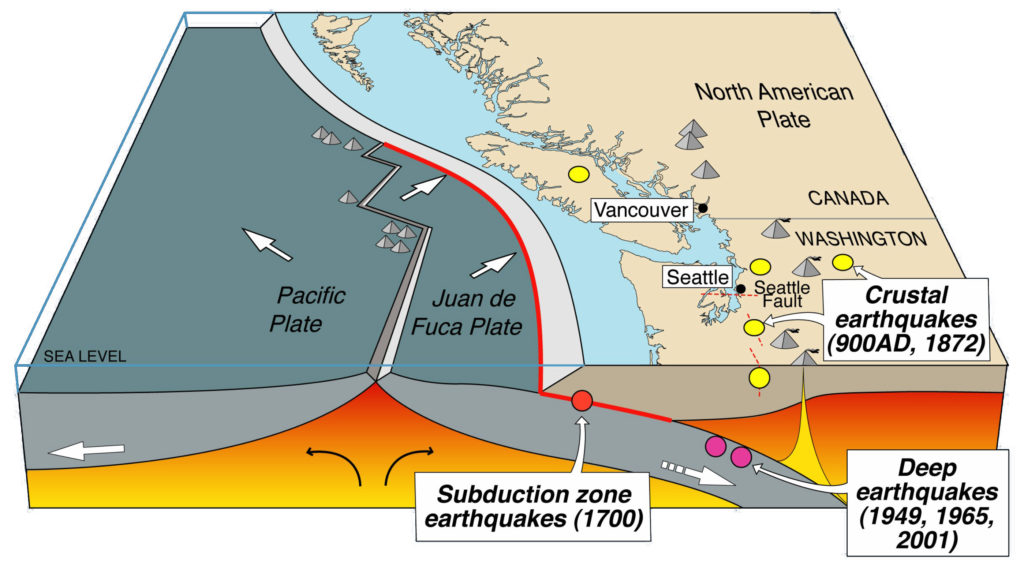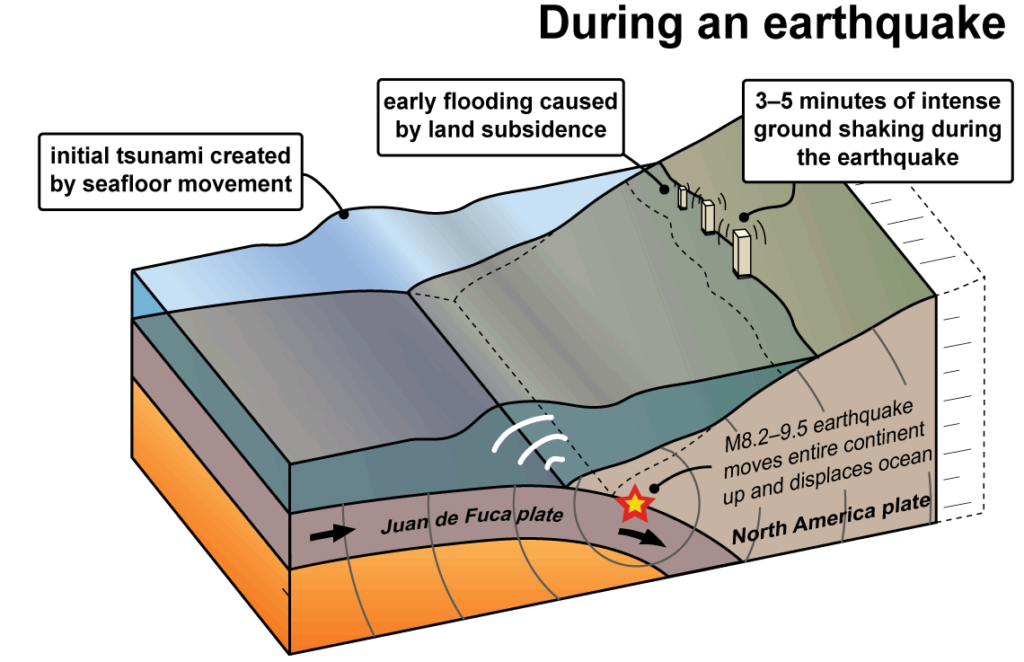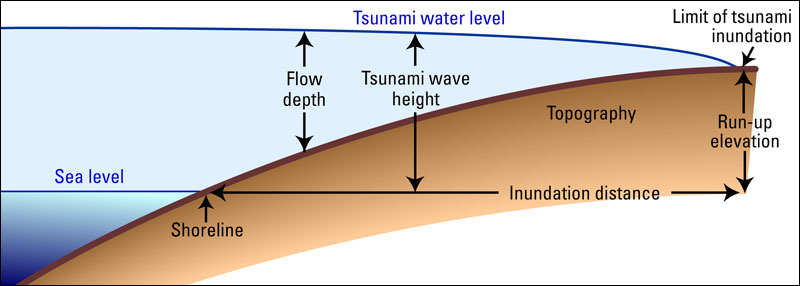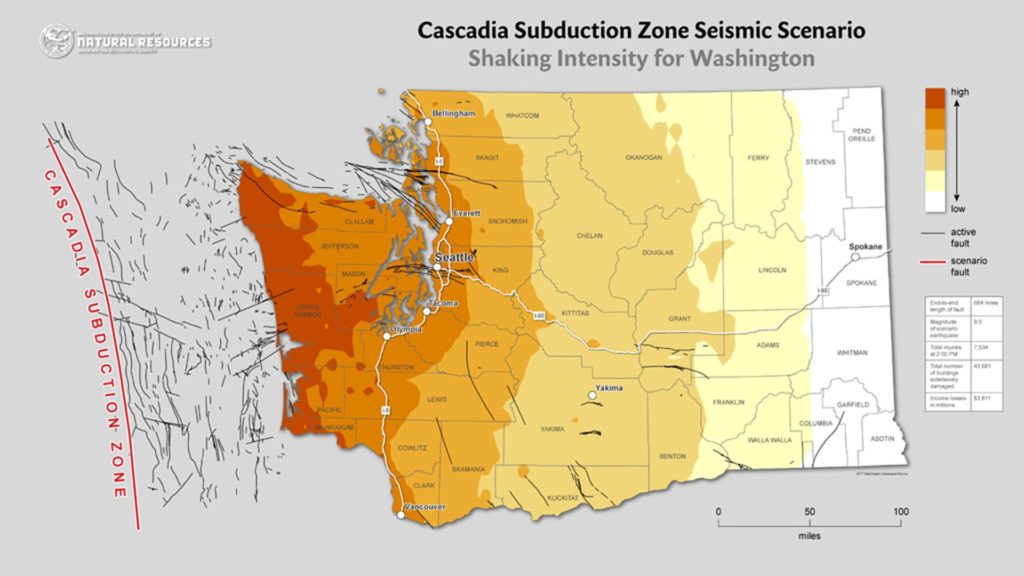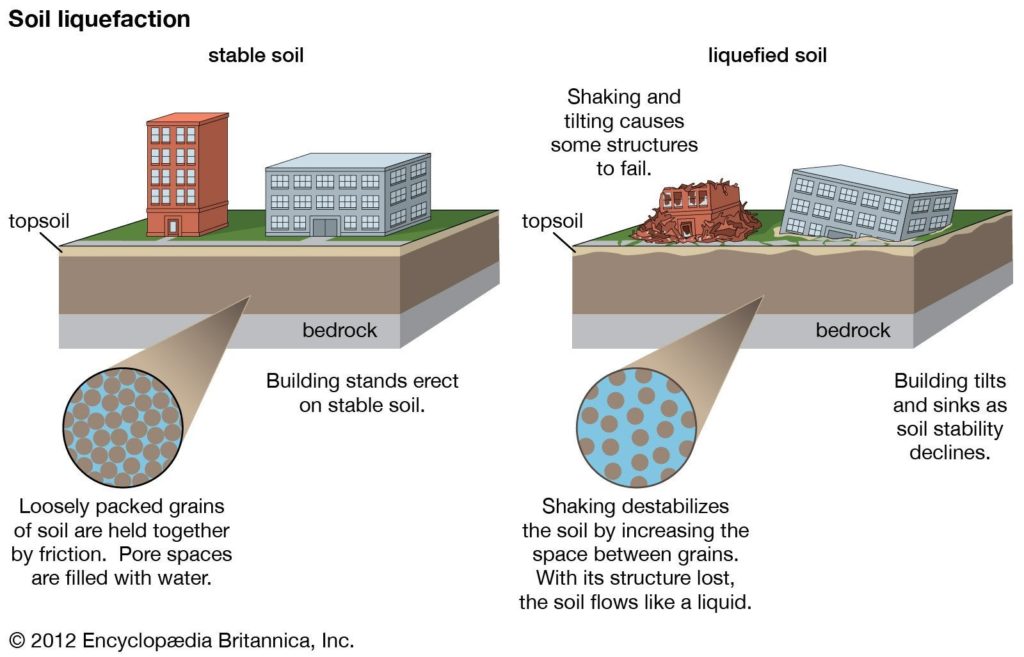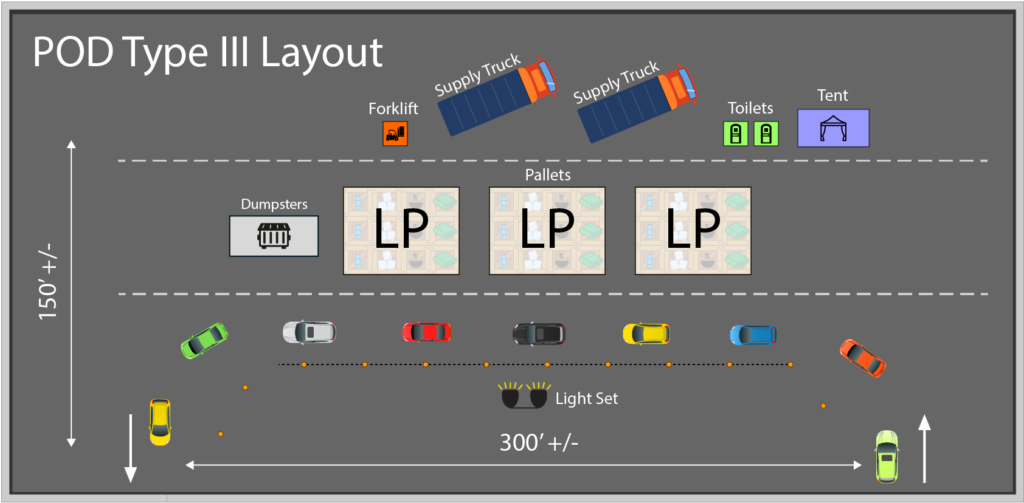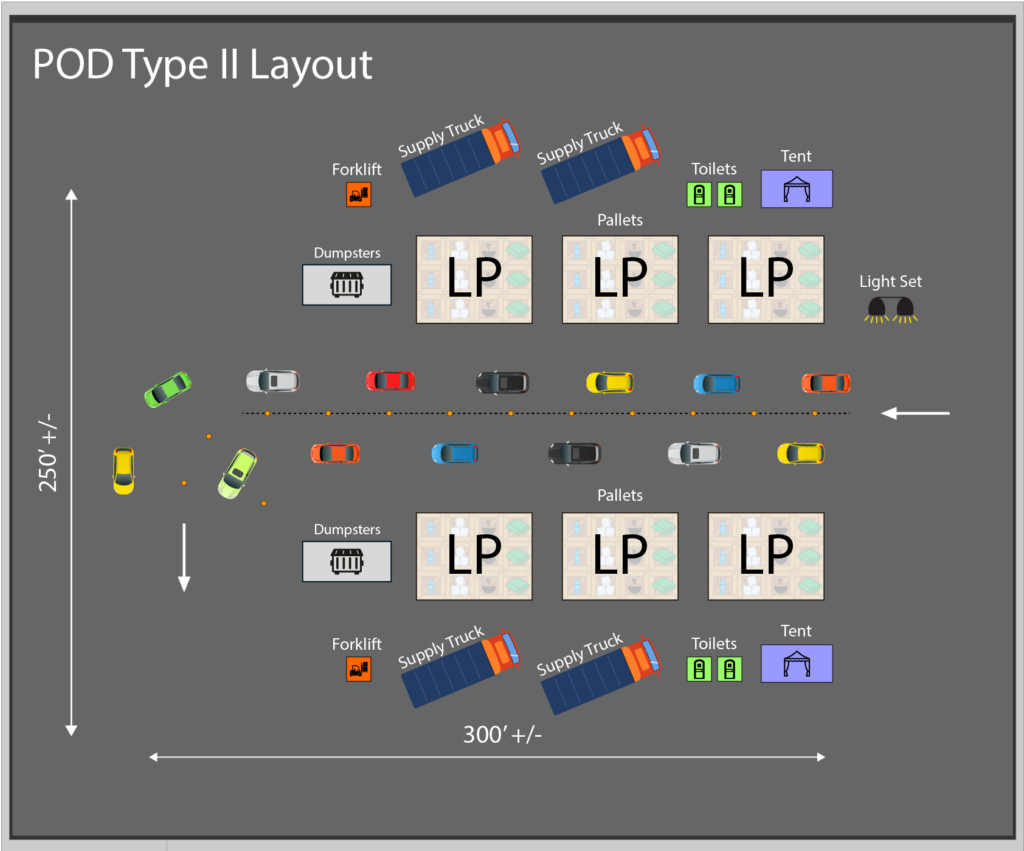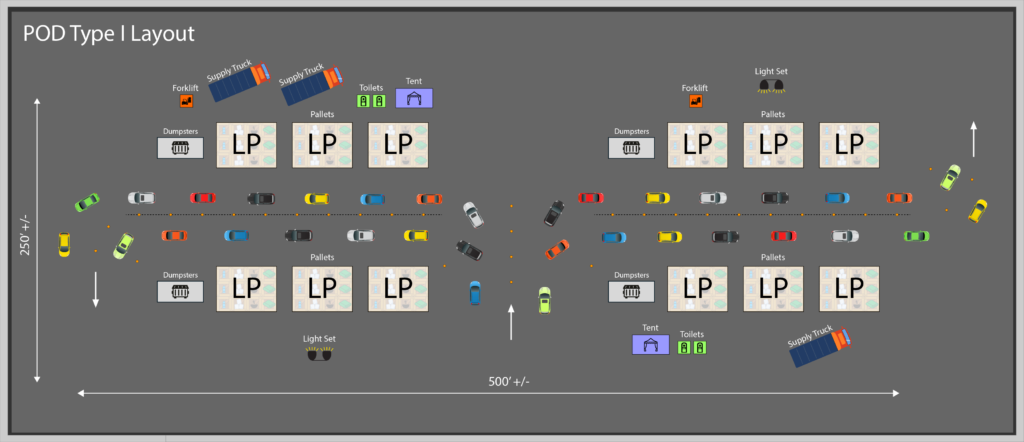Intent and Audience
The Kitsap County Micro-Island Catastrophic Event Playbook’s purpose is to provide an easy to use and field worthy guide to lead community members into a response stature following a Catastrophic Event, predominantly a 9.0 magnitude or greater earthquake from the Cascadia Subduction Zone. This Playbook will take two forms:
- Governing Document: Instructions, Concepts, and Data Sets for the Emergency Management Professionals
- Field Guide: Community User Guide in a Weatherproof and Pocket-Sized Book for Community Members
Defining the Threat
Catastrophic Event/Incident: “A catastrophic incident is defined as any natural or manmade incident, including terrorism, that results in extraordinary levels of mass casualties, damage, or disruption severely affecting the population, infrastructure, environment, economy, national morale, or government functions.” – DHS, National Response Framework
The Cascadia Subduction Zone Threat: A Cascadia Subduction Zone Event is based on the threat of a catastrophic magnitude 9.0 Subduction Zone earthquake and resultant tsunami. This is often referred to as the “Big Slip.” Kitsap County will experience varying levels of tsunami inundation on top of severe ground shaking (up to five minutes). There will also be varying levels of soil liquefaction throughout the county, disrupting critical infrastructure and potentially causing landslide events.
Tsunami Inundation: “The horizontal distance inland that a tsunami penetrates, generally measured perpendicularly to the shoreline.” – USGS, Tsunami Terminology
Liquefaction: “A process by which water-saturated sediment temporarily loses strength and acts as a fluid, and takes place when loosely packed, water-logged sediments at or near the ground surface lose their strength in response to strong ground shaking.” – USGS, Natural Hazards
Landslides: “The movement of a mass of rock, debris, or earth down a slope. Landslides are a type of ‘mass wasting’ which denotes any down-slope movement of soil and rock under the direct influence of gravity.”-USGS, Natural Hazards
Flooding: Cascading effects from Tsunami Inundation, Liquefaction, Landslides, Destruction of Sewer and Stormwater Drainage, Debris Build-up, and Current Weather could lead to flooding throughout the region.
Fires: Destruction of buildings, critical infrastructure, and utilities such as gas and electrical lines could create fire hazards across the county.
The Population Micro-Island Concept
The compounding effects of a 9.0 or greater earthquake from the Cascadia Subduction Zone will devastate critical infrastructure across the county. Communities can expect loss of power, communication disruption, dangerous waterways, damaged roads and bridges, damaged or destroyed buildings, and disrupted water and sewer utilities. This will force populations within the Kitsap County to be temporarily isolated from the remaining population and normal life-sustaining functions. Kitsap County and partnering agencies has developed shake model testing and population density screening to determine geographic regions called Micro-Islands. These areas may be required to act independently during the first response stages of a catastrophic event. Each Micro-Island has been outlined and named numerically for quick reference based on its location within the county and has an associated Gap Analysis and Capabilities Assessment to determine its response capabilities, using FEMA’s Community Lifeline Components (CLCs). The following is a breakdown of how the Micro-Islands are named based on their locations in the county’s school districts:
-
- 100 Series – North Kitsap
- 200 Series – Central Kitsap and Bremerton
- 300 Series – South Kitsap
- 400 Series – Bainbridge Island
- 500 Series – Military Installations
Community Points of Distribution (CPOD) Sites
Defining a CPOD: Community Points of Distribution (CPODs) sites are predetermined centralized locations where the local population can acquire life sustaining shelter following a disaster or emergency event. – WSEMD, CPOD Manager Course
FEMA and Army Corps of Engineer Outlook: The intended use of the CPODs is to establish large community distribution of life sustaining supplies by utilizing truck deliveries to the site and equally distributing the supplies through a one-way traffic system. In order to accomplish this goal three defined types of CPODs have been given layout designs based on their sizes.
-
- Type III: 150 x 300 [ft]
- Type II: 250 x 300 [ft]
- Type I: 250 x 500 [ft]
Micro-Island Outlook: The initial response following a catastrophic event will most likely not allow for truck deliveries to these sites as defined by FEMA’s primary use of the CPODs. However, each Micro-Island can utilize these locations as places to go to initialize their first community level response efforts. In addition to acting as a gathering point and possible shelter, emergency supplies and tools could be stored there to aid the communities in this initial response, when outside aid and travel will be unlikely. They can then be set-up to the receive large deliveries later in the response efforts.
Neighborhood Gathering Sites & Neighborhood Emergency Supplies and Tools (NEST) Kits
Concept: Neighborhood Gathering Sites are meeting places for the community to gather after a Catastrophic Event. These sites are meant to initially coincide with the CPODs for consistency of location. However, they can be relocated depending on the circumstances and status of each CPOD Site. To help foster the community in its initial response, The CPODs should be outfitted with five sealed containers or Neighborhood Emergency Supplies and Tools (NEST) Kits containing “Emergency Task Cards,” tools, and equipment to begin response operations. The Kits labeled “Command & Communication Station” will have two Task Cards. The first being labeled, “Read This Card First,” located on the outside of the NEST Kit and will provide the site lead with instructions for establishing a volunteer command and begin resourcing the other sealed NEST kits and other Task Cards labeled as the following:
- Command & Communication Station (Read This Card First)
- Shelter Station
- First Aid Station
- Water, Sanitation and Hygiene (WaSH) Station
- Search & Rescue Station
Community Lifeline Components (CLCs)
Defining CLCs: Community Lifeline Components (CLCs) are basic functions of a community that enable the continuous operations of critical businesses and government functions that are essential to human health and safety or economic security. – FEMA
Utilizing CLCs: Reestablishing these CLCs are key to developing a functional response effort and are part of FEMA’s overarching plan to increase effectiveness in disaster operations and put the agency in a better position to respond to catastrophic incidents. Using the terminology and structure of the CLCs will allow State and Federal emergency management specialists better prepare and request aid for deployment. In order to utilize these CLCs, tasks have been included in the Playbook to stabilize these basic components called Stabilization Tasks.
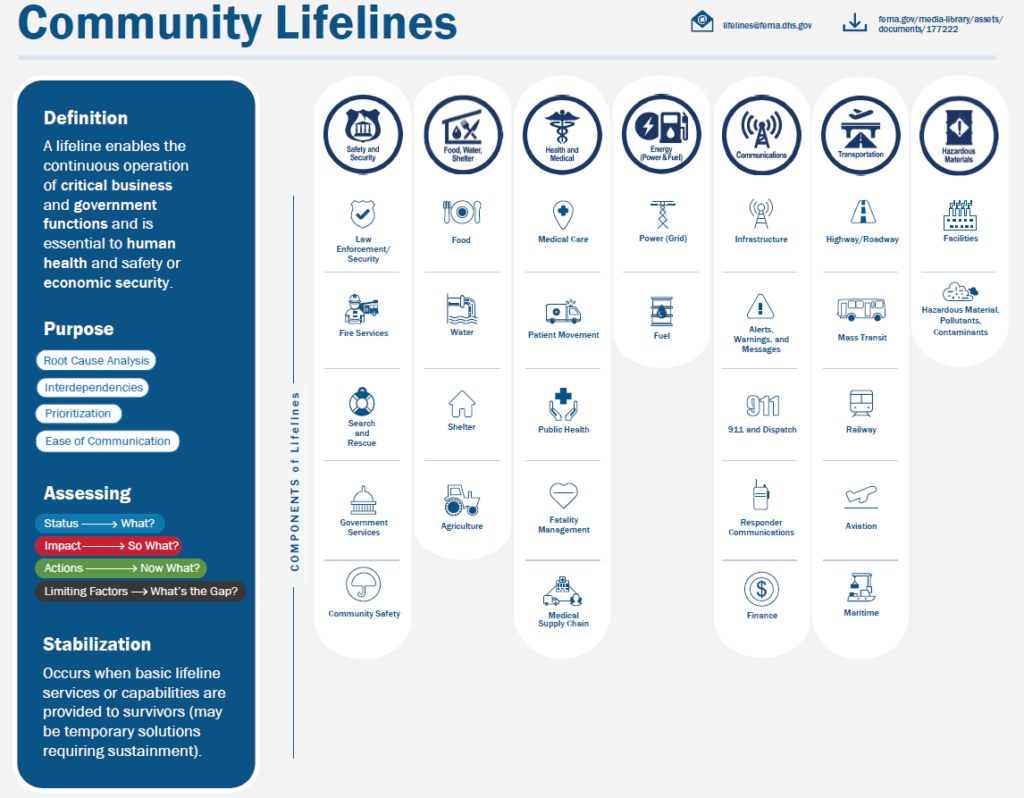
“Play” – Objectives and Stabilization Tasks
Concept: The Kitsap County Micro-Island Catastrophic Event Playbook takes a community response standpoint and provides sets of objectives and stabilization tasks to community members, which are divided into three “Plays”: Initial Response, Sustained Response, and Long-Term Response Strategies.
The 3 “Plays” detailed throughout the Playbook are structured based on a time relation from the catastrophic event. However, the time listed in the “Plays” are general ideas of when the objectives should be accomplished and should not be seen as a strict requirement. The Stabilization Tasks will help breakdown the overall objectives for each “Play” into smaller and more specific actionable tasks pertaining to each CLC. If completed, the Stabilization Tasks will accomplish the overall objectives.
Learn more about the Kitsap County CPOD program.
